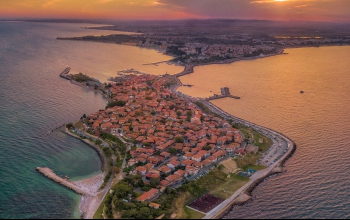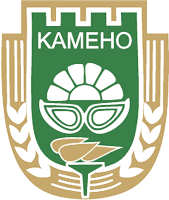Mesembria - Nessebar
The ancient city is located 28 km in a straight line from the city of Burgas. It is located on the Nessebar peninsula. The earliest archeological finds testify that there was an old Thracian settlement from the VII-VI century BC. Towards the end of the 6th century BC, ca. In 510, Greek colonists from the cities of Megara, Chalcedon and Byzantium - today's Istanbul - settled here. The city soon became one of the largest Greek cities on the Western Black Sea coast. Even then it was fortified with a fortress wall. The fact that as early as the first half of the 5th century BC the ancient Messambria was eloquent speaks volumes about how powerful it was. Here began the coinage of silver, and later bronze and gold coins - hemidrachms, tetradrachms and staters. The earliest coins depict a helmet, and later Athena Paladas.The city was conquered by the Romans in 72 BC. Later, it became a thriving commercial city. At the end of the 3rd and 4th centuries, the Roman Empire was subjected to numerous attacks by the Gothic tribes. As a result, almost all Roman cities were fortified, including Mesembria. Thanks to archeological excavations today it is established that at the end of the 5th century the city was strongly fortified, as the main gate was on the west side.
Archaeological excavations have revealed 6 towers and a monumental fortress wall, reaching a height of 8 m. Later this wall was repaired and completed at the end of the VI century; the second half of the ninth century; the first half of the 14th century and towards the end of the same century. After the founding of the Bulgarian state in 681, Mesembria became a border Byzantine-Bulgarian city. There was also customs here. The importance of the city is also evidenced by the fact that a large military unit was stationed here, headed by a gorge-commander - a commander of the detachment guarding the border with Bulgaria.
One of the Byzantine emperors, Leo III the Syrian (717-741), grew up in medieval Mesembria. In 812 the Bulgarian Khan Krum included Mesembria within the borders of the Bulgarian state. Later, the city was returned to Byzantium, but remained the main sea point through which trade took place between the two countries in the IX - X century. After 1201, Mesembria was already a Bulgarian city. By the middle of the 13th century, the Bulgarian kings of the Assen dynasty had built at least 3 of the churches in Nessebar - St. Petka-Paraskeva, St. Archangels Michael and Gabriel and St. Todor. The city has been repeatedly mentioned in sources as an important economic and political center. It is also the capital of the son-in-law of Tsar Ivan Asen II.
In 1257, Mesembria was briefly conquered by a Venetian flotilla, and later by Byzantium. After 1305 he returned to the borders of the Bulgarian kingdom. It was in the 14th century, during the reign of Tsar Ivan Alexander, that the city flourished and became one of the main trading cities in Bulgaria. Leather, wax, wheat, honey and many more are exported from here and other agricultural products. The main merchants were Genoa and Venice. It was then that the Bulgarian kings built the churches. Pantocrator and St. John Aliturgetos. Since that time in the springs the town is definitely called by its Bulgarian name Nessebar. It was a diocese under the auspices of the Tarnovo Patriarchate.
In 1366 the city was conquered by the knights of Count Amedei VI of Savoy and handed over to Byzantium. In 1396 it was briefly conquered by the Ottomans, but was later returned to Byzantium. After 1453 it entered the Ottoman Empire permanently.



